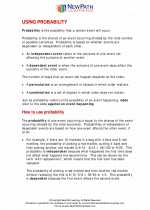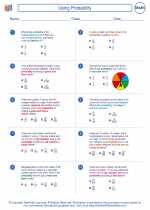Satellites
A satellite is an object that orbits or circles around a larger object. In the context of space and astronomy, satellites are usually artificial objects placed into orbit around the Earth or other celestial bodies. Satellites serve various purposes, including communication, navigation, weather monitoring, scientific research, and more.
Types of Satellites
- Communications Satellites: These satellites are used for transmitting television, radio, internet, and telephone signals.
- Navigation Satellites: These satellites provide positioning and timing information for navigation purposes, such as GPS satellites.
- Weather Satellites: These satellites monitor and track weather patterns and provide valuable data for weather forecasting.
- Scientific Satellites: These satellites are equipped with scientific instruments to conduct research and gather data about space, Earth, and other celestial bodies.
Orbit Types
Satellites can be placed in different types of orbits, including:
- Low Earth Orbit (LEO): Satellites in LEO are closer to the Earth and orbit at a relatively lower altitude, typically used for Earth observation and communication purposes.
- Geostationary Orbit (GEO): Satellites in GEO orbit at the same speed as the Earth's rotation, allowing them to remain fixed relative to a specific location on the Earth's surface, commonly used for communication and weather monitoring.
- Polar Orbit: Satellites in polar orbit pass over the Earth's poles and are often used for Earth observation and environmental monitoring.
Key Concepts to Understand
When studying satellites, it's important to grasp the following key concepts:
- Orbital Mechanics: Understanding how satellites move and stay in orbit around celestial bodies.
- Communication Technology: How satellites relay signals and data between different locations on Earth.
- Remote Sensing: The use of satellites to gather information about the Earth's surface, atmosphere, and other phenomena.
Study Tips
To effectively study satellites, consider the following tips:
- Review the basic principles of physics and astronomy to understand the fundamental concepts of satellite motion and orbits.
- Explore the history of satellite technology and its impact on various aspects of human life and scientific research.
- Engage in hands-on activities, such as using simulation software to visualize satellite orbits and communication processes.
- Stay updated on the latest developments in satellite technology and its applications in fields like environmental monitoring, disaster management, and telecommunications.
◂Math Worksheets and Study Guides Seventh Grade. Using Probability
Study Guide Using Probability
Using Probability  Worksheet/Answer key
Worksheet/Answer key Using Probability
Using Probability  Worksheet/Answer key
Worksheet/Answer key Using Probability
Using Probability  Worksheet/Answer key
Worksheet/Answer key Using Probability
Using Probability 

 Worksheet/Answer key
Worksheet/Answer key
 Worksheet/Answer key
Worksheet/Answer key
 Worksheet/Answer key
Worksheet/Answer key

The resources above cover the following skills:
Data Analysis and Probability (NCTM)
Understand and apply basic concepts of probability
Compute probabilities for simple compound events, using such methods as organized lists, tree diagrams, and area models.